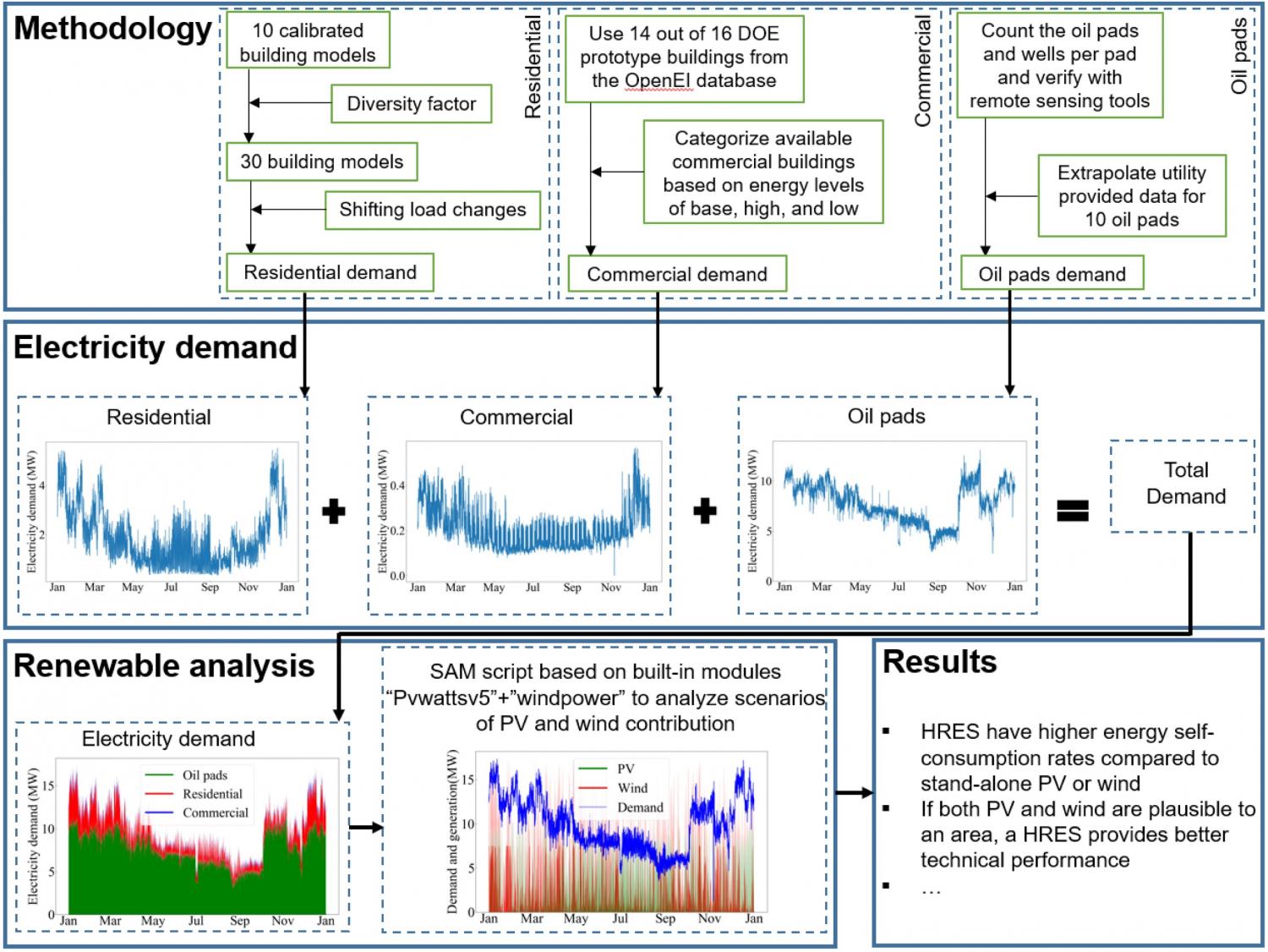
This paper provides a methodology for the holistic analysis of hybrid renewable energy systems in rural communities. Electric demand is an important component for modeling and analysis of renewable energy systems. Typically, electric demand data is not available due to the internal privacy policies of utility providers. Therefore, this study proposes the use of bottom-up approaches for the development of the electric demand profile, considering the general homogeneity of residential and commercial buildings in rural communities. As a test case, this study develops the electric demand profile and investigates the technical and environmental feasibility of a hybrid renewable energy system for the New Town community on the Fort Berthold Indian Reservation (FBIR) in North Dakota. This study conducts the hybrid renewable energy system's analysis by developing scripts in the LK scripting language and integrating System Advisor Model software's open-source modules for modeling of renewable energy systems. The results for the validation testbed of this study show that hybrid renewable resources have higher ratios of energy used for self-consumption to the total energy generated compared to stand-alone wind and PV farms.
